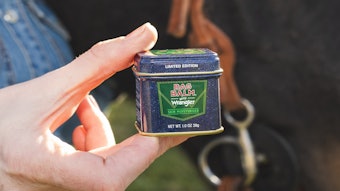
COVID-19 has altered the way the world is turning, and the cosmetic industry is no different. One way it has taken us by storm is the panic ensued by consumers to hoard and mass-purchase hand sanitizer. This is accompanied by brands and companies trying to mass formulate and produce hand sanitizer to meet this demand.
Raw materials are being sold as fast as they are available. This, in turn, has lead to raw material supply having longer than expected lead times or unknown restock dates. Even brands that normally do not produce hand sanitizer have started producing it and with that, the U.S. Food and Drug Administration (FDA) has started to crack down on companies that are not following the rules and regulations.1
Hand sanitizers are intended to be applied to dry hands, followed by rubbing and massaging into hands until dry. They are meant to reduce the level of transient bacteria and viruses on the hands.1 There are two main types of hand sanitizers: "instant" hand sanitizers and hand sanitizers; following is a brief discussion of the content of each, as well as the consideration for hand-washing.
Hand Sanitizer
The Centers for Disease Control (CDC), FDA and World Health Organization (WHO) define hand sanitizer as a formulation containing alcohol, glycerin, hydrogen peroxide and water—and nothing else. This type of hand sanitizer may contain 80% ethyl alcohol or 75% isopropyl alcohol. No other additives are allowed.2
Each of the ingredients serves a purpose. The denatured ethyl alcohol functions as the active ingredient. This active will allow the hand sanitizer to act as a topical antiseptic or antimicrobial agent. In addition, hydrogen peroxide will have a similar function but at a lower percentage than that of the denatured ethyl alcohol. These ingredients will help to reduce the level of transient bacteria and viruses on the hands.
Glycerin is a humectant that will affect the viscosity of the final product as well as provide a minimal level of moisturization to the skin. Water performs as a solvent and vehicle to help deliver the final product to the skin.
‘Instant’ Hand Sanitizer
"Instant" hand sanitizer is an FDA-monographed product meaning it is considered an over-the-counter (OTC) drug. This product is often in gel form and is seen in common brands such as Purell and GermX. Since this is considered an OTC formulation, it contains an active ingredient—in this case, denatured ethyl alcohol, which is listed on the packaging as “alcohol.” When formulating this type of hand sanitizer, formulators are allowed per the monograph to add fragrances, humectants and other ingredients to assist in the marketing story or consumer acceptability of the product.2
As mentioned previously, the active ingredient in the formula is alcohol, which acts as a topical antiseptic or antimicrobial agent. This provides protection against bacteria and viruses.
In addition, common rheology and viscosity modifiers utilized include acrylates/C10-30 alkyl acrylate crosspolymer and carbomer. These high molecular weight, cross-linked polymers of acrylic acid help to make a viscous gel that is resistant to alcohol disruption. These require pH neutralization with alkaline ingredients such as triethanolamine.
Due to the drying nature of alcohol, many formulas will also include humectants to help reduce skin irritation. A few common humectants used are glycerin, propylene glycol and propanediol.
Aside from the drying nature of alcohol, it also has a strong odor that may not be pleasant to all consumers. Thus, the addition of fragrances may be necessary to increase consumer acceptability.
Hand-washing
Hand sanitizers can denature viruses by their mechanisms of action—although, notably, they do not effectively kill all germs.3 They also do not remove the denatured virus from the surface of the skin. Thus, hand-washing with soap is also recommended and is the superior method for virus removal, to ensure consumer health and safety. This is due to the function of surfactants to disrupt the non-covalent interaction that holds viruses' and bacteria's cell walls together and attaches them to skin.
A Place and Time for Each
It is worth noting that "instant" hand sanitizers or hand sanitizers are convenient options for on-the-go or in cases where there is no access to soap and water. For those who use hand sanitizer throughout the day, however, hand-washing is of utmost importance as soon as soap and water becomes available to detach viruses and bacteria from the skin.










